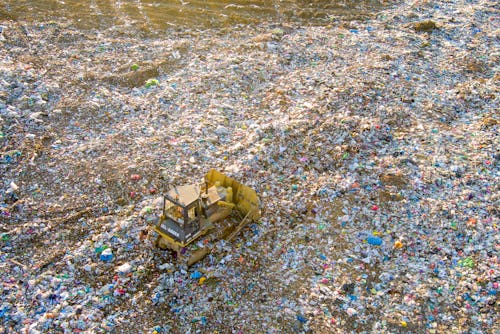The U.S. has a national recycling plan — finally
The Environmental Protection Agency has created a roadmap that should result in the U.S. recycling at least half of its municipal waste by 2030.

Recycling in the United States — for a lack of a better term — sucks. It is disparate and hyperlocal to the point that neighboring cities have completely different rules. The rules are confusing, and the whole process is so wildly inadequate anyway that some people have given up trying to sort their waste, and some cities have abandoned efforts to recycle altogether.
The Environmental Protection Agency is hoping to finally address that. On Monday, the agency announced a plan to develop a new national recycling strategy. Bolstered by $350 million in grants for waste and recycling programs set aside by the bipartisan infrastructure bill signed into law by President Biden this week, the EPA has set up a framework that will seek to put the U.S. on track to recycle at least 50% of its municipal waste by 2030.
At the core of the EPA’s plan is a shift toward a circular economy — a strategy that encourages sustainable practices through the life of a product, from production to disposal, and attempts to keep materials in use for as long as possible. To achieve this, the EPA has a five-point plan: increase the collection of recyclable materials, reduce contamination of those materials, enhance policies to support recycling, standardize recycling definitions, and improve and expand markets for recycled goods. Basically, the EPA wants the country to get better at collecting recyclable goods, actually recycling them, and then building demand for those recycled products to encourage the cycle to continue.
Implicit in all this is the fact that currently, the U.S.’s recycling efforts are trash. According to the EPA’s own data, which only covers up to 2018 (an indictment all on its own), the country only recycles or composts about 32% of its municipal waste. That represents a decline from its peak of 35% in 2017, and it has almost certainly gotten worse in the last two years as millions of pounds of medical waste and excess single-use plastic goods have been generated as a result of the coronavirus pandemic.
Speaking of plastic, our recycling record is even worse there. Plastic, a product of natural gas, can take hundreds of years to decompose, and yet a whopping 90% of it ends up in landfills. And then it sits there, releasing harmful gasses like methane and other greenhouse emissions that contribute to climate change.
The fact is, if handled correctly, as much as 75% of all municipal waste could be recycled. That we’re not recycling even half of that is shameful. It’s even more embarrassing when you consider the fact that the Government Accountability Office has pushed for recycling reform since 2006, with a target of recycling 35% of municipal waste, and we’ve failed to accomplish that a full 15 years later.
Historically, the U.S. approach to recycling has been something closer to sweeping everything under the rug and calling it clean. About 70% of the country’s recyclable waste was shipped to China until the country closed its doors to the rest of the world’s trash in 2018. The EPA’s new plan isn’t perfect — it’s short on specifics, fails to address actually reducing consumption, and fails to take chemical recycling, a method of converting plastics that produces a surprising amount of carbon emissions, off the table.
But at least it’s a plan. And it’s one that is ambitious enough to be cautiously optimistic about.